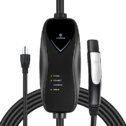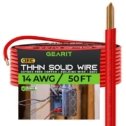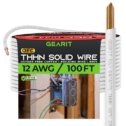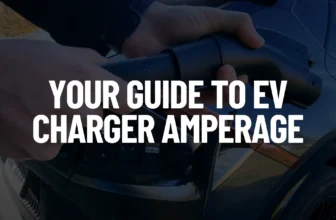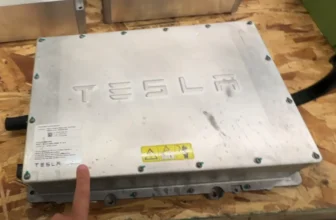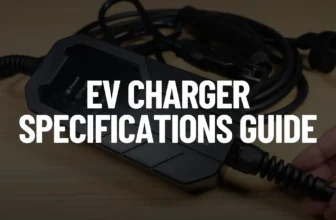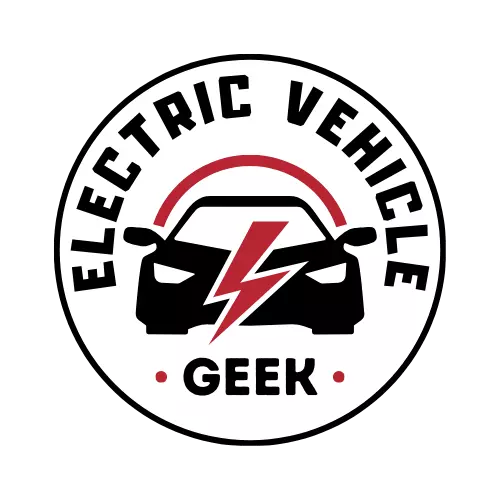Choosing the right Level 1 EV charger wire size is important for safety, efficiency, compliance, performance, and future-proofing your EV charger installation as we will later explain in this post.
A Level 1 EV charger typically operates at 120V AC and can deliver a current ranging from 15A to 20A, with a common rating of 16A for continuous load. This results in a power output of approximately 1.4 kW to 1.9 kW, allowing for an addition of about 3 to 5 miles of range per hour of charging, depending on the vehicle’s efficiency.
A Level 1 EV charger usually features a NEMA 5-15 or NEMA 5-20 plug for plug-in models, which connect to standard 120V NEMA 5-15R or NEMA 5-20R outlets.
We recently purchased a Lectron Level 1 EV charger and installed it in our detached garage!
Lectron Level 1 Tesla Charger Review
Although its charging speeds are lower than those of Level 2 EV chargers, we chose a Level 1 charger for our solar EV charging system due to its lower power consumption. You can find our review of the Lectron Level 1 EV Charger here.
Whether you recently bought an aftermarket Level 1 EV charger such as the Lectron EV charger or have an OEM Level 1 EV charger, we’ve got you covered. In this post, we’ll break down:
- Wire and breaker sizes for your Level 1 charger.
- How to install a level 1 EV charger using a plug-in on a 120V outlet
- The importance of choosing the correct wire size for your Level 1 EV charger installation.
For more information on EV charger wire sizes based on EV charging level, amperage, circuit breaker requirements, and power ratings, check out our comprehensive guide on Choosing the Right EV Charger Wire Gauge.
Table of Contents
Level 1 EV Charger Wire Size
According to National Electrical Code (NEC) Table 310.15(B)(16) (formerly Table 310.16), the recommended wire size for a Level 1 EV charger depends on the charging current:
- 12 amps: 14 AWG copper wire
- 16 amps: 12 AWG copper wire
NEC recommends using the correct wire size to ensure your EV charger installation is safe, functional, and efficient.
Although 10 AWG aluminum can be used to install a Level 1 EV charger, we recommend solid copper wires for their superior conductivity and reliability. Copper wires offer better EV charging performance by minimizing voltage drop, ensuring efficient power delivery. Additionally, copper’s durability and resistance to corrosion contribute to a longer lifespan and enhanced safety for your EV charging system.
Level 1 EV Charger Amperage Rating
The amperage rating for a Level 1 electric vehicle (EV) charger is typically around 12 amps but can range up to 16 amps.
Level 1 EV Charger Circuit Breaker Size
To install a Level 1 EV charger, the required circuit breaker size depends on the charging current:
- 12-amp charger: A dedicated 15-amp circuit breaker with 14 AWG copper wire
- 16-amp charger: A dedicated 20-amp circuit breaker with 12 AWG copper wire
This follows the NEC 125% rule, which states that the rating of an overcurrent device (such as a breaker or fuse) should be at least 125% of the continuous load. Since Level 1 EV chargers operate continuously (more than 3 hours), this ensures safe and efficient operation.
What Size Wire Do I Need for a Level 1 EV Charger?
Now that you understand the amperage rating of a Level 1 EV charger and the dedicated circuit breaker size, let’s see how these factors determine the correct wire size for installation.
As per the NEC 125% rule, the required circuit breaker size is calculated as:
For a 12-amp EV charger:
12A × 125% = 15A → Requires a 15-amp circuit breaker
For a 16-amp EV charger:
16A × 125% = 20A → Requires a 20-amp circuit breaker
Knowing the circuit breaker size, we refer to the National Electrical Code (NEC) Table 310.15(B)(16) (formerly Table 310.16) for the recommended wire size:
- For a 15A circuit breaker: 14 AWG copper or #12 AWG aluminum
- For a 20A circuit breaker: 12 AWG copper or #10 AWG aluminum
Using the correct wire size ensures a safe, efficient, and NEC-compliant installation.
What Type of Cables Can Be Used to Install a Level 1 EV Charger?
When selecting cables to install a Level 1 EV charger, the choice of material—copper or aluminum—plays a crucial role. Copper wire is often preferred for its superior conductivity and durability, but aluminum wire can be a cost-effective alternative for specific applications. Below is a breakdown of cable types suitable for both copper and aluminum installations:
Copper Wire Cables (Recommended)
- NM-B (Non-Metallic Sheathed Cable)
- Also known as Romex, this cable is commonly used for indoor residential wiring. It includes insulated conductors and a bare ground wire within a non-metallic sheath.
- Suitable for indoor Level 1 EV charger installations where the cable will not be exposed to moisture or mechanical damage.
- MC (Metal-Clad Cable)
- Contains conductors enclosed in a metal sheath, providing extra protection. It is often used in commercial settings or areas where the wiring may be exposed to physical damage.
- Ideal for Level 1 EV charger installation in garages, basements, or installations requiring additional mechanical protection.
- THHN/THWN (Thermoplastic High Heat-Resistant Nylon-Coated)
- These are individual conductors with insulation and a nylon coating. THWN is also rated for wet locations.
- Commonly pulled-through conduits for indoor or outdoor Level 1 EV charger installations.
- UF-B (Underground Feeder Cable)
- A weather-resistant cable designed for direct burial underground. It has a tough outer sheath to withstand moisture and soil.
- Usage: Ideal for outdoor Level 1 EV charger installations requiring a direct underground run.
Aluminum Wire Cables
- USE (Underground Service Entrance Cable)
- Designed for direct burial underground, this cable is commonly used for service connections and outdoor electrical distribution.
- Usage: Suitable for underground runs from the electrical panel to the charger or subpanel.
- SE (Service Entrance Cable)
- A cable designed for above-ground service connections, typically between the meter and the electrical panel.
- Usage: Used when running aluminum wire from the main panel to the charger or subpanel in outdoor or exposed locations.
How To Install a Level 1 EV Charger – NEC – US
To install a Level 1 EV charger, you will need a single pole dedicated 20-amp circuit breaker connected to the charger using 12 AWG copper wires (1 Hot, 1 Neutral, 1 Ground) for hardwired installations. Alternatively, the charger can be plugged into a 120V Nema 5-15 receptacle or a NEMA 5-20 outlet that is also connected to the same 20-amp dedicated circuit breaker, using 12 AWG copper wires (1 Hot, 1 Neutral, 1 Ground).
Related Post: EV Charger Earthing Guide
NEMA 5-15 Level 1 EV Charger Wiring Diagram – NEC – US
In the NEMA 5-15 Level 1 EV charger wiring diagram below, we illustrate how to install a Level 1 EV charger using 14 AWG copper wire, such as GearIT 14 AWG THHN Wire.
GearIT 14 AWG Level 1 EV Charger Installation Wire Review
The GearIT 14 AWG THHN solid copper wire connects the NEMA 5-15 outlet to a 15-amp single-pole dedicated circuit breaker as shown in the NEMA 5-15 12 amps ;level 1 EV charger circuit wiring diagram below:
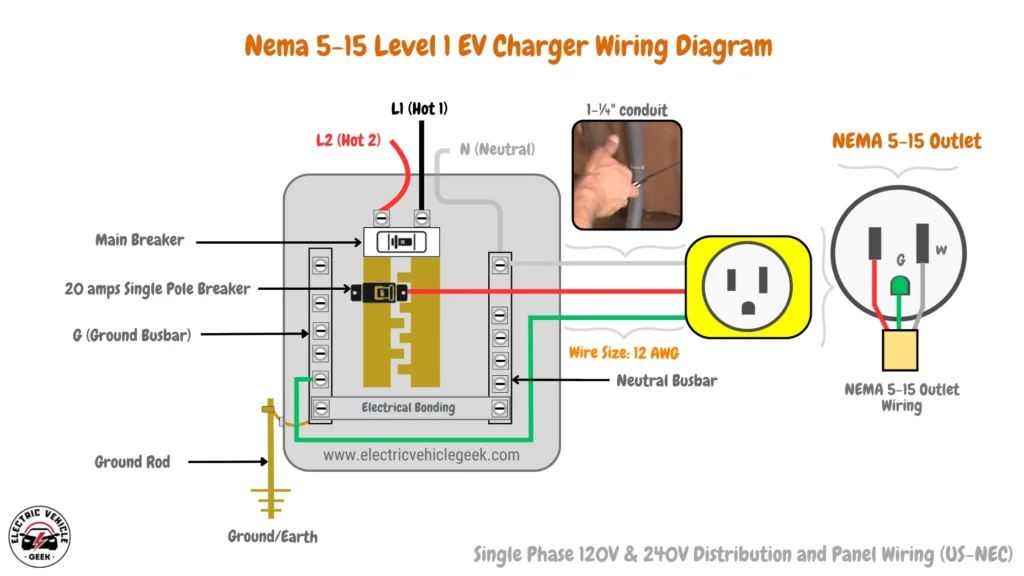
Many top-rated Level 1 EV chargers, such as the Lectron Level 1 EV Charger, feature a NEMA 5-15 plug, requiring a NEMA 5-15 outlet for proper connection to the electrical circuit.
NEMA 5-20 Level 1 EV Charger Wiring Diagram – NEC – US
Some Level 1 EV chargers, such as the Tesla Mobile Connector, require a NEMA 5-20 outlet connected to a 20-amp dedicated circuit breaker using 12 AWG copper wire, we recommend using solid copper wires such as GearIT 12 AWG THHN Wire shown below:
GearIT 12 AWG Level 1 EV Charger Installation Wire Review
Below is a NEMA 5-20 Level 1 EV Charger Wiring Diagram that illustrates how to wire the 12 AWG wires to NEMA 5-20 outlets:

Hardwired Level 1 EV Charger Wiring Diagram – NEC – US
Sometimes you might need to hardwire a Level 1 EV charger instead of connecting it to a NEMA 5-15 outlet for permanent placement, some EV charger installers recommend a hardwired Level 1 EV charger installation due to its safety, high efficiency, clean installations, and reduced wear and tear.
The diagram below shows a hardwired level 1 EV charger wiring diagram:
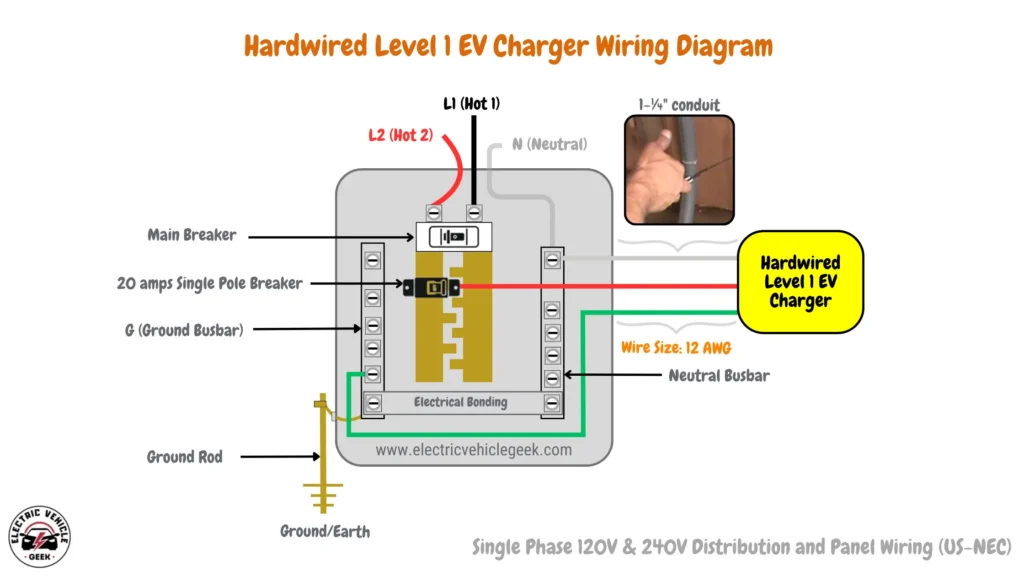
Conclusion
Selecting the correct wire size for your Level 1 EV charger is essential for safe, efficient, and compliant operation. The required wire size depends on the charger’s amperage:
- For a 12-amp charger: 14 AWG copper or 12 AWG aluminum wire
- For a 16-amp charger: 12 AWG copper or 10 AWG aluminum wire
Copper is preferred due to its superior conductivity and durability. Additionally, it’s important to use cables rated for the specific environmental conditions they will encounter, such as outdoor or wet locations.
Always follow NEC standards and local building codes to ensure compliance and safety. When planning your installation, consider using conduits where needed and hardwiring the charger for a more permanent setup. Proper cable selection minimizes risks such as overheating or electrical faults, ensuring reliable performance and a longer lifespan for your EV charging system.
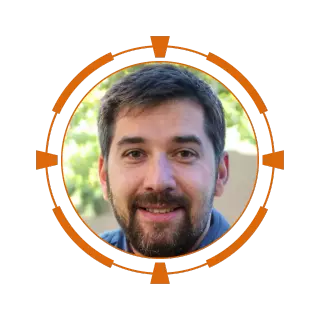
James Ndungu is a certified EV charger installer with over five years of experience in EVSE selection, permitting, and installation. He holds advanced credentials, including certification from the Electric Vehicle Infrastructure Training Program (EVITP) and specialized training in EV charging equipment and installation, as well as diplomas in EV Technology and Engineering Fundamentals of EVs. Since 2021, James has tested dozens of EV chargers and accessories, sharing expert insights into the latest EV charging technologies.

